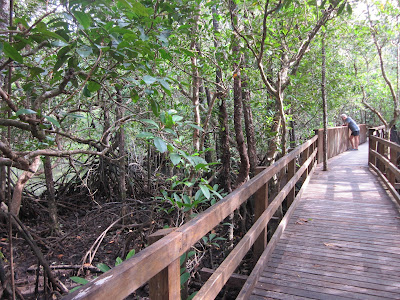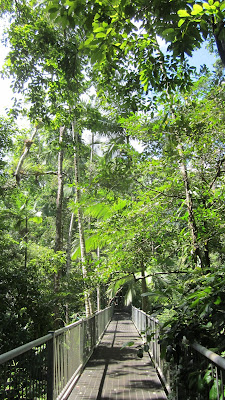Okay, it wasn't absolutely perfect ... there was a bit of a wind going out. It was a choppy 40 km to our first snorkel site.
But once we were next to the reef, the wind dropped. The air temperature was 30 degrees and the water temperature was 29 degrees. Bliss.
Lee and Suz were staying with us in Port Douglas. We had a memorable day on the reef together. We stopped at three snorkel sites during the day: the tide was going out, so at the last site the coral was very close to the surface. Water visibility was very good. On large outcrops, we hovered on the surface of the water and could see layers and layers of sea life: shimmering schools of small fluorescent fish, velvety clams, soft and spongy coral, spiky and stripy coral, bright yellow angel fish, some Moorish idols (for a lucky few) -- and we could hear as well as see big blue parrot fish chomping noisily on the reef.
At the second snorkel site, we were startled to see a HUGE fish swimming to the boat and lurking ferociously around us as we all swam off the boat. This was a Maori wrasse, advertised as Marvin in the brochure. Apparently 'Marvin' is a large territorial male, who challenges the boat (and snorkellers) every day as it enters his territory. Anyway, he was all bluster. But very brazen -- at one point, he swam above the snorkelling platform, which is lowered into the water to allow easy access.







.jpg)




















































